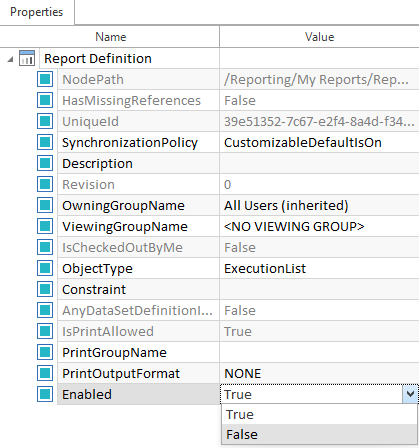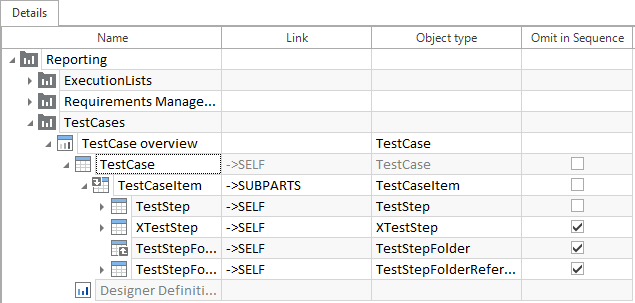Print reports
You can print a report for any object that you have assigned to a Report Definition and for which you have designated a Designer Definition.
You can print a report for the following object types:
-
Modules and XModules
-
TestCases
-
ExecutionLists
-
ExecutionLogs
-
Requirements
-
RequirementSets
-
TestCase-Design Sheets
-
Report Definition
-
Project root element
To print a report, right-click on the object and select Print Report...-><Report Definition> from the contex menu. If an object has been assigned to more than one Report Definition, you can print a report for each Report Definition.
If you have not specified a Designer Definition, then the Report Definition will be grayed out.

Print TestCase report
You can customize your report settings in the Tosca Commander Options. For more information, see chapter "Options - ReportingAddIn".

|
Reports can only be printed if the Report folder is below project root level. If the Report folder is within a Component folder, it will not be displayed in the Print Report... context menu. |
If you do not want a report to be shown in the Print Report... menu, you can disable it. To disable a report, set the Enabled property to False on the Report Definition level.

Disable report
Omit in Sequence
You can omit selected Dataset Definitions from your printed report by using the column Omit in Sequence. The selected objects will then be omitted from your report.

Omit in Sequence column
Alternatively, you can omit objects by changing the OmitInSequence property of a Dataset Definition to False in the Properties pane.
Create automated reports via TCShell
You can generate reports automatically via TCShell. To do so, follow the steps below:
-
In Tosca Commander, navigate to the Report Definition for which you want to print a report. Make sure that the value of the property PrintOutputFormat is set to NONE.
-
Navigate to %COMMANDER_HOME%, copy the TCShell.exe.config file, and paste it in %TRICENTIS_ALLUSERS_APPDATA%\Settings\.
-
Open your copied TCShell.exe.config file. Under <sectionGroup>, copy an existing <section...*> and paste it directly below its existing location.
-
Replace name="..." with the following: "Tricentis.TCAddIns.Reporting.Properties.Settings"
-
Under <userSettings> copy and paste the following:
<Tricentis.TCAddIns.Reporting.Properties.Settings>
<setting name="DefaultPrintOutputFormat" serializeAs="String">
<value>ASKUSER</value>
</setting>
</Tricentis.TCAddIns.Reporting.Properties.Settings>
This allows TCShell to create reports without any user interaction.
-
Save and close your TCShell.exe.config file.
-
Open TCShell and use TCShell commands to navigate to the object within the relevant workspace for which you want to print a report.
-
Enter the command Print Report... to generate your report.
Example
The example below shows how to print the report Test Case Report to PDF and save it to your D:\ drive using TCShell commands.
Use the TCShell command ChangeNode (cn) to navigate to TestCases, enter the task Print Report ..., and enter the filepath where you want to save your PDF file. When you are finished, you can exit TCShell by using the exit command and confirming that you really want to exit.
cn TestCases
task "Print Report ... Test Case Report"
D:\\example.pdf
exit
y
The system names the file example.pdf and saves it to your D:\ drive.